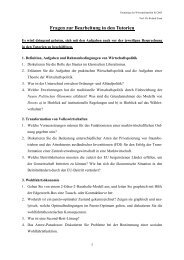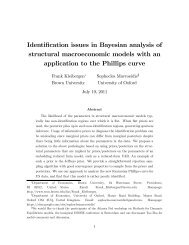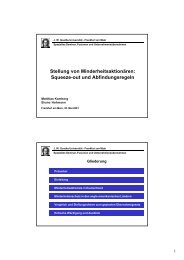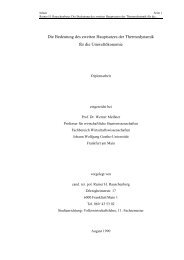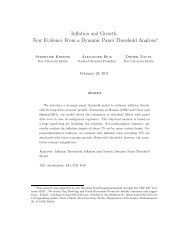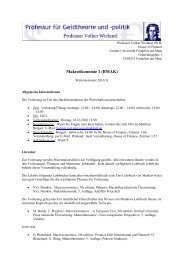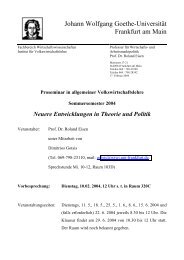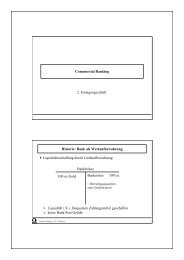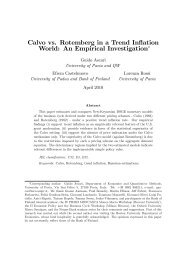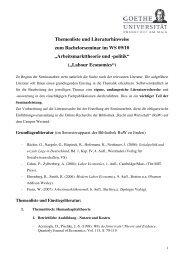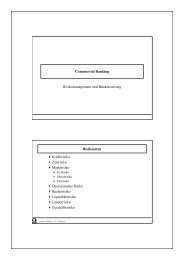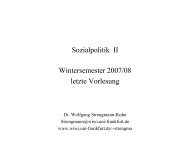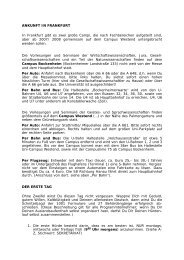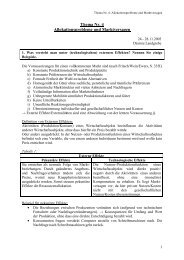Michael Burda - Sciences Po Spire
Michael Burda - Sciences Po Spire
Michael Burda - Sciences Po Spire
You also want an ePaper? Increase the reach of your titles
YUMPU automatically turns print PDFs into web optimized ePapers that Google loves.
and CLR (”SUPERBLUE”). Tables 3 and 4 which report the results. Now<br />
each entry corresponds to a regression. The OLS estimate is reported as a<br />
benchmark. The first column IV(I) corresponds to instrumental variables<br />
with religion and female participation as instruments, the second column<br />
IV(II) reports the single deviation of BLUE and SUPERBLUE from their<br />
regional averages.<br />
The results are consistent with the OLS evidence of Tables 1 and 2, especially<br />
for the IV estimates using religion and female participation. States<br />
with blue laws of the narrow definition have 9 log points less relative employment,<br />
16.1 log points higher wages, 17.4 log points higher productivity,<br />
and 6.1 log points lower relative prices. Value added shares are unaffected.<br />
Part-time work in retail is reduced by 1.7 percentage points, although overall<br />
part time is unaffected. The IV estimates suggest that negative employment<br />
effects emanate from general merchandise stores and eating and drinking<br />
establishments, while apparel food and grocery stores show little clear direction.<br />
Compensation is significantly higher under regulation in most sectors<br />
(522,523,525,527). TheresultsforSUPERBLUE,whichhavenodirect<br />
quantitative interpretation, are reported as a consistency check and are similartothoseforBLUE.<br />
5.4 CPS March 1979 Results<br />
Finally, we turn to individual CPS data for ”independent” verification of the<br />
macro US state results. We took a representative year (1979) in which the<br />
state regimes were highly regulated (22 states had blue laws in the narrow<br />
sense). We considered the following three variables on individual workers<br />
in employment in March: (1) real weekly gross earnings, (2) weekly hours<br />
and (3) real hourly wages. In a standard ”Mincer-style” specification used<br />
for earnings equations, we regressed the log of the dependent variable on<br />
potential experience, its square, education in years and its square, sex, sex<br />
interactions with all of the aforementioned covariates, 15 sectoral dummy<br />
variable, plus an interaction for the retail sector - this time defined without<br />
eating and drinking establishments - with the three dummies for state blue<br />
laws (narrow definition). The results, while not as strongly significant as<br />
those from the panel, support the conclusion that Sunday closing regulation<br />
affects employment negatively. As with the macro data, there is no evidence<br />
that the hourly wage in retail is affected. This is consistent with the macro<br />
results if the net effectofbluelawsistoconcentrateemploymentintheform<br />
22



